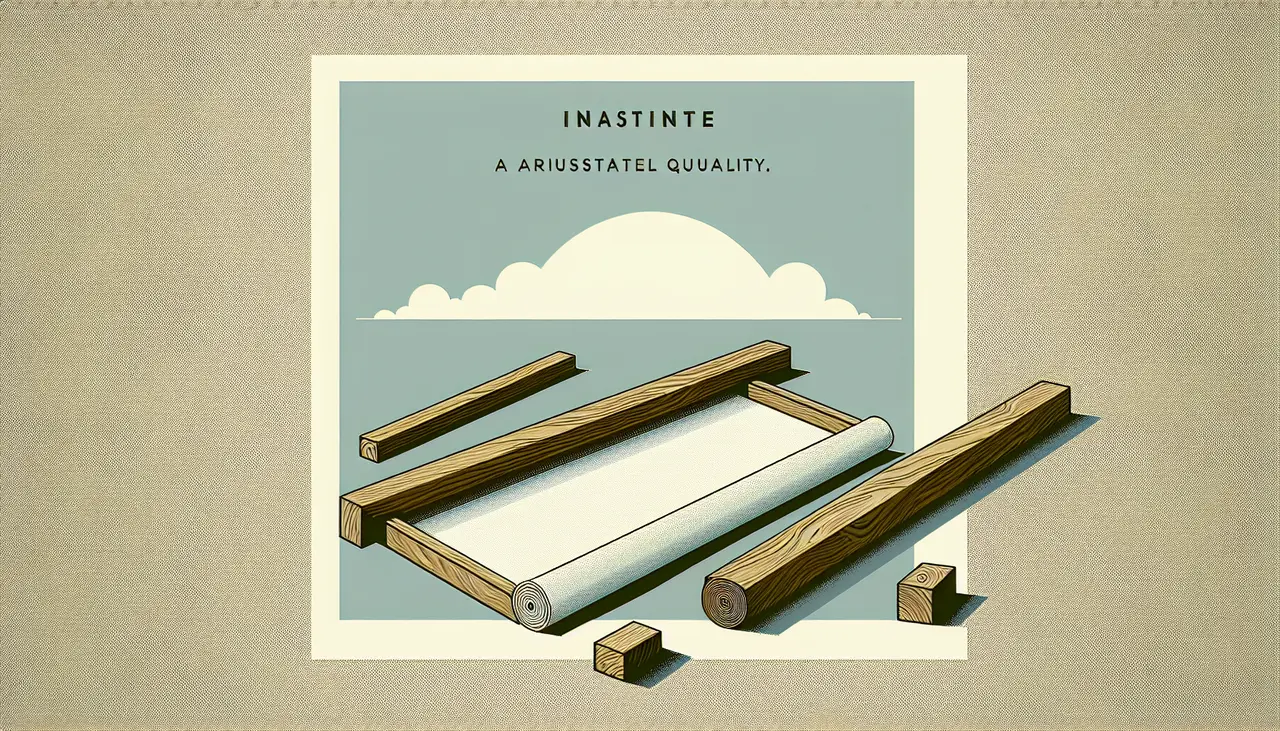The Benefits of Genuine Wood Stretcher Bars for Canvas Prints
In the world of art, the value of a masterpiece isn’t just in the brushstrokes on the surface; it’s also about the support that holds it all together. Genuine wood stretcher bars provide not only this foundational support for canvas prints but elevate the piece, ensuring durability and visual appeal that complements the art. Let’s delve into why choosing the right stretcher bars can make all the difference.
The Significance of Choosing Quality Stretcher Bars
Selecting high-quality stretcher bars is crucial for artists and galleries alike, providing the backbone for canvas artworks. These bars, often overlooked, play a vital role in maintaining the structural integrity and longevity of a piece. Especially genuine wood stretcher bars, known for their robustness, ensure that canvas remains taut and presentable over time, free from the sagging that can afflict lesser materials. Their choice is a testament to an artist’s commitment to quality and durability.
Moreover, the material of your stretcher bars can significantly impact the final appearance of your artwork. Genuine wood bars contribute not just to the artwork’s longevity but also its aesthetic appeal. They interact with the canvas and paint in a way that enhances the textural qualities of the piece, adding depth and warmth that can only come from organic materials. This nuanced interplay between stretcher bar and canvas makes a subtle, yet profound difference to the viewer’s experience.
How Genuine Wood Enhances Durability and Appearance
Genuine wood, with its inherent strength and flexibility, is an ideal material for stretcher bars. Unlike synthetic alternatives, wood can adapt to environmental changes, expanding and contracting without damaging the canvas it supports. This resilience is key to the preservation of artwork, especially in varying climates where humidity and temperature can fluctitate dramatically. Such durability ensures that canvas prints remain pristine, echoing the timelessness of the artworks they bear.
The visual appeal of genuine wood stretcher bars lies in their natural texture and coloration, which can subtly show through the edges of stretched canvas, offering a traditional and refined finish. For galleries and collectors, the choice of wood can align with specific frames or decor, presenting a cohesive and sophisticated aesthetic. This harmonious interconnection between the stretcher bars and the displayed environment amplifies the artwork’s presence, making a definitive statement of quality and attention to detail.
Types of Wood: Options and What to Consider
When it comes to selecting stretcher bars, the type of wood used is a decision not to be taken lightly. Options range from softwoods like pine, known for its affordability and ease of use, to hardwoods like oak, which offers unmatched durability and stability. Each type of wood has its own set of characteristics, including grain, texture, and resistance to warping, which can affect the overall look and lifespan of the canvas print.
One must consider the specific needs of their artwork when choosing stretcher bar material. For instance, larger works might benefit from the sturdiness of harder woods, which resist bending under the canvas’s weight. Meanwhile, intricate works or those displayed in fluctuating conditions might do better with softer woods that offer a bit more flexibility. The artist’s or collector’s preference for the visible wood’s aesthetic along the canvas edge also plays a role, with some woods offering a more pronounced grain than others.
Installation Tips for a Perfect Canvas Stretch
Achieving a perfect stretch on a canvas print is as much an art as it is a technical skill. Key to this process is ensuring that the stretcher bars are aligned and square before the canvas is attached. This foundational step prevents future warping or twisting. Equally important is the method of stretching—working from the center outwards in opposing directions helps maintain an even tension throughout the canvas, eliminating the risk of puckering or bulging.
Caring for Your Canvas Prints: Maintenance and Display
The care of canvas prints extends beyond the moment of hanging them on a wall. Regular dusting with a soft, dry cloth can prevent buildup that might otherwise mar the surface. Additionally, it’s advisable to keep canvas prints out of direct sunlight and away from extremes of humidity to protect both the canvas and the wood of the stretcher bars from degradation. When moved or stored, canvas prints should be covered with a clean, soft material and placed in a position that prevents pressure on the canvas surface.
Where you choose to display your canvas print can significantly affect its longevity. Opting for a spot that avoids direct indoor lighting or sunlight can prevent fading and maintain the vibrant colors of the artwork. Moreover, understanding the climatic sensitivity of the wood stretcher bars and canvas can guide the choice of display location, ensuring the artwork remains in its best condition for years to come. With the right care, canvas prints mounted on genuine wood stretcher bars can be enjoyed for generations.
The Underlying Art of Stretcher Bars
The art of canvas printing is complemented magnificently by the structural integrity and aesthetic appeal of genuine wood stretcher bars. From the durability they offer to the way they enhance the overall appearance of the artwork, it’s clear that these bars are more than just a framework; they’re an integral part of the art itself. Remember, the next time you look at a canvas print, there’s a good chance that its beauty and longevity are being supported by the unseen, yet crucial, craftsmanship of genuine wood stretcher bars.




